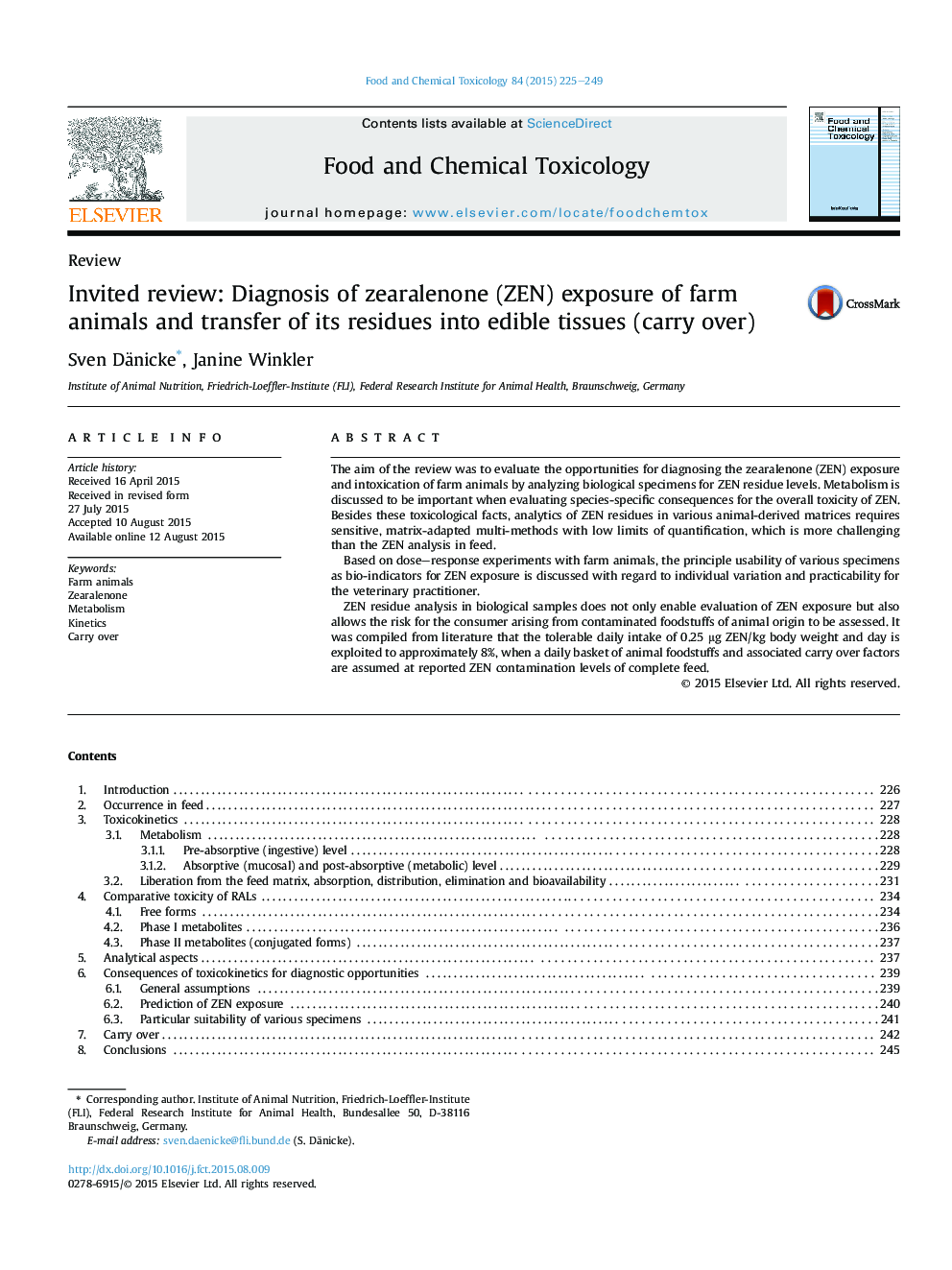| کد مقاله | کد نشریه | سال انتشار | مقاله انگلیسی | نسخه تمام متن |
|---|---|---|---|---|
| 5849500 | 1561760 | 2015 | 25 صفحه PDF | دانلود رایگان |

- ZEN modification in animals results in metabolites differing in toxicity.
- Metabolism of ZEN is a determinant for species-specific differences in the sensitivity to ZEN.
- Analyzing of various physiological specimens for ZEN residues allows evaluation of the exposure of animals and humans.
- ZEN residue levels in edible tissues do contribute to human exposure only to a minor content.
- Prediction of dietary ZEN exposure of animals based on ZEN residues in physiological specimens is largely variable.
The aim of the review was to evaluate the opportunities for diagnosing the zearalenone (ZEN) exposure and intoxication of farm animals by analyzing biological specimens for ZEN residue levels. Metabolism is discussed to be important when evaluating species-specific consequences for the overall toxicity of ZEN. Besides these toxicological facts, analytics of ZEN residues in various animal-derived matrices requires sensitive, matrix-adapted multi-methods with low limits of quantification, which is more challenging than the ZEN analysis in feed.Based on dose-response experiments with farm animals, the principle usability of various specimens as bio-indicators for ZEN exposure is discussed with regard to individual variation and practicability for the veterinary practitioner.ZEN residue analysis in biological samples does not only enable evaluation of ZEN exposure but also allows the risk for the consumer arising from contaminated foodstuffs of animal origin to be assessed. It was compiled from literature that the tolerable daily intake of 0.25 μg ZEN/kg body weight and day is exploited to approximately 8%, when a daily basket of animal foodstuffs and associated carry over factors are assumed at reported ZEN contamination levels of complete feed.
Journal: Food and Chemical Toxicology - Volume 84, October 2015, Pages 225-249